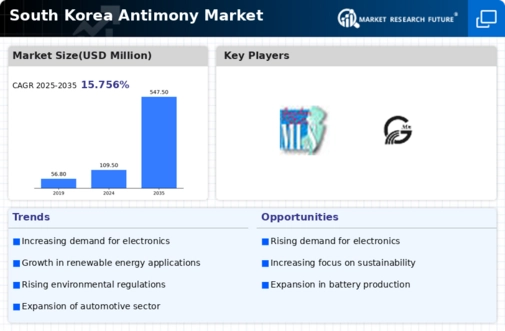In South Korea, the antimony market is influenced by several key market drivers. The increasing demand for antimony in the production of flame retardants, which are crucial for various industries such as electronics, textiles, and construction, plays a significant role in shaping market dynamics. The country’s robust electronics manufacturing sector is a critical consumer of antimony trioxide, used as an effective flame retardant in components, ensuring safety and compliance with international standards.
Additionally, South Korea's efforts to enhance battery technologies, particularly in electric vehicles and energy storage systems, are driving the need for antimony as a stabilizing agent in certain types of batteries. There are numerous opportunities to be explored in this market, particularly as South Korea transitions towards a greener economy. The government's initiatives to support sustainable and eco-friendly manufacturing processes present a chance for the antimony industry to innovate and develop products that align with these goals.
This shift can attract investments and foster partnerships focused on research and development of alternative applications for antimony, which could result in market expansion. Recently, trends have shown a growing focus on recycling and recovery of antimony from industrial waste, driven by the increasing importance of sustainability in South Korea. The government supports initiatives aimed at circular economy practices, encouraging industries to minimize waste and optimize resource usage. As regulations regarding environmental protection tighten, industries are more inclined to source antimony from sustainable and recycled sources.
Moreover, the rise in domestic production capabilities, as well as collaborative projects with other countries to secure stable supply chains, reflects a proactive approach in the South Korean antimony market landscape. Overall, these trends signify a dynamic and evolving market that is adapting to both local and global changes.
Source: Primary Research, Secondary Research, Market Research Future Database and Analyst Review













Leave a Comment